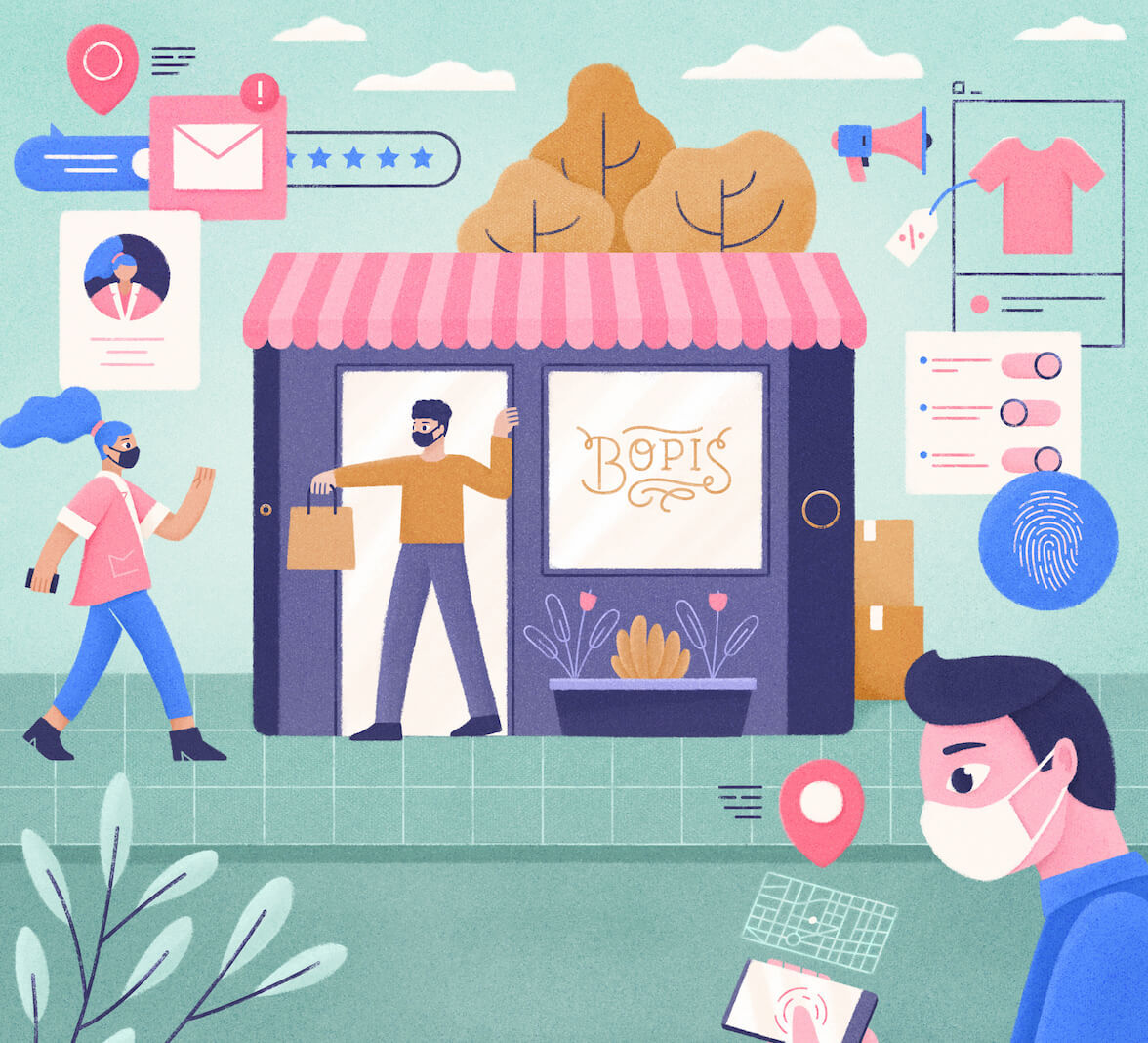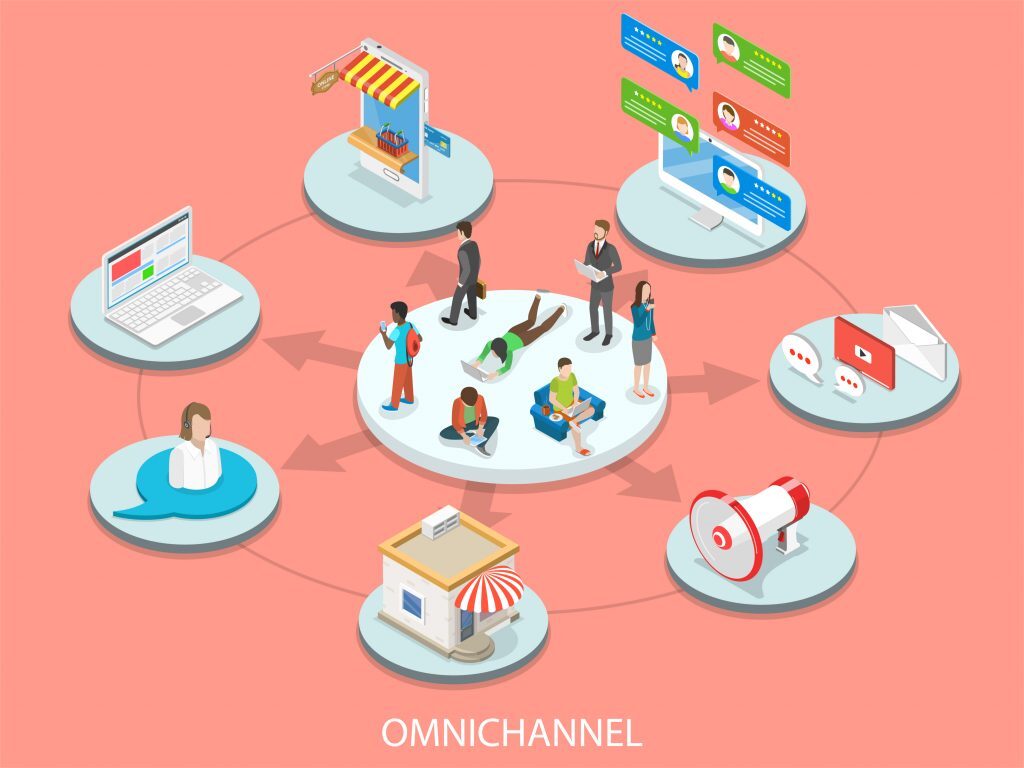Retailers in the COVID-19 era have been forced to integrate their digital operations with their brick-and-mortar stores as a means of survival. According to research from digital signage platform Raydiant, 55% of retailers report that without expanding into e-commerce, they’re unsure whether they would have survived the pandemic, or they’re certain their business would have failed.
Yet the same research found that only a small fraction of retailers plan to keep these integrations of physical and digital operations in place after the pandemic (14% for delivery and 17% for curbside pickup).
This disconnect shows that marketers and data officers still don’t fully appreciate the harmonizing of digital and physical operations and making them flexible enough to respond to changing customer needs. But it is possible to express brick-and-mortar strengths in the digital world; it just means getting smart about your omnichannel strategy. Here are three ways to start.
Use Brick-and-Mortar Stores for Online Pickups and Returns
In recent years, retailers have discovered that using physical stores for fulfillment and returns are key to staying competitive in the age of Amazon. These options are convenient for customers and good for retailers since customers who step inside a store are more likely to make a second purchase.
Implementing a buy online, pick up in-store (BOPIS) program has been a particularly valuable strategy during the pandemic since it lets customers minimize the amount of time they have to spend in stores. As early as April, the National Retail Federation reported that half of the consumers used BOPIS because of the pandemic.
In the long run, buy online, return in-store (BORIS) may prove to be just as valuable to retailers as BOPIS because it ensures quicker restocking of returned items and eliminates the cost and logistical challenges of accepting returns by mail.
Let customers choose
Integrating stores into online pickups and returns is most effective when you present it to customers as a choice and let them pick the method that’s best for them. When a customer needs something urgently, they can pick it up that day, but if they don’t mind waiting, they can get the item delivered and save themselves a trip to the store. Walmart credits this strategy for its success during the pandemic. Its online sales rose 97% in the second quarter but not at a cost to store sales, which grew 9.3%.
Walmart CEO Douglas McMillon plans to keep weaving together online and in-person strategies with an omnichannel approach in which “the customer is ultimately in charge.” Walmart plans to add a membership program to further drive loyalty by giving customers flexibility. Says McMillon: “Sometimes they’ll be in the store, and sometimes they’ll do pickup, and sometimes they’ll do delivery, and many of them will buy a membership.”
Unite all locations with a single inventory
Successfully implementing these programs requires a high degree of visibility into both customers and inventory. You need access to a customer’s geographic location, and you need to pinpoint the location of the product they’re looking for. With this information, when a customer is browsing online, you can provide them with the best options at checkout. If the item they want is in a far-off warehouse, deliver it. If it’s at their neighborhood store, let them pick it up. If it’s at a store a few miles away, give them a choice.
“Flexible inventory is the best inventory,” noted Jonathan Jonas, co-founder of eCommerce infrastructure consultancy Decent Startup. He predicts that in the coming years, “we could also see more and more same-day offerings as fulfilling eCommerce orders from store becomes a normal part of everyday operations.”
Personalize Customer Outreach Without Being Invasive
Retailers are always looking for ways to give their brand that “personal touch,” and for marketers, that increasingly means targeted digital outreach. Properly employed, these efforts can drive customers to your stores, but it’s important to be cautious about the data you ask for and how you use it.
Some retailers, for instance, have experimented with using customers’ location data to send notifications to customers’ phones when they’re near a store. However, retailers need to use this data cautiously or risk alienating consumers.
Mike McGuire, VP analyst for Gartner Marketing, points out that “proximity does not equal permission. Many consumers will keep location tracking off of their applications because they don’t want to be pestered.” He says that Gartner’s surveys found that consumers will enable location tracking only in cases when it delivers value to them: finding a store near them or if a product needs to be delivered to them.
Prioritize privacy and choice in data collection
Keeping customer value and privacy in mind is critical in assessing how you should collect and employ personal data. Gartner recognizes this growing concern, and they included “customer data ethics” on their 2020 Hype Cycle for Digital Marketing. This highlights the need for retailers to be transparent, legally compliant, and secure, even as they innovate. That means, at a baseline, that personally identifiable data should be encrypted and access to it should be rigorously controlled. At a time when customer trust is everything, you don’t want to squander it with a data breach.
There are less invasive methods for targeted digital marketing that can still drive customers to stores. For instance, optimizing your company for local SEO is still the best way to find new customers instead of losing them to online competitors.
You should also look for opportunities for targeting that require customers to directly opt-in, like emails and push notifications that tell them about sales at their local store. Multichannel Merchant suggests using in-store signs to promote digital marketing. “Stores can have signs for customers to text ‘Welcome Back’ to a five-digit number to receive an exclusive promotion. A quick text elevates their store visit and opts them in for future updates.”
Guarantee Adaptability With an Omnichannel Approach
We don’t know when the pandemic will end or how it will affect consumer habits in the long-term, but the retailers that survive and thrive will be the ones that embrace organizational change to stay aligned with their customers. The only way to do that effectively is with an omnichannel strategy that lets you allocate resources to the right channels and make adjustments as you go.
First and foremost, this requires retailers to know these customers on both a broad and granular level, and tailor your approach to them based on your knowledge. In an effective omnichannel approach, user identity is the connective tissue between digital and physical transactions. It’s what lets you create seamless customer experiences and maintain visibility over your customers and their habits. A customer can order a product on their laptop, get a push notification on their phone when it’s ready, and pick it up curbside; it works because the retailer’s identity management system keeps track of their journey, from computer to mobile device to physical location.
To get this bird’s-eye view of customers, use your customer identity and access management (CIAM) system to create a single source of truth about each customer. Each interaction with your company—whether in-store or online—feeds into a central profile, which enables better audience segmentation and marketing. The analytics from your CIAM platform will give you real-time insights into shoppers’ habits, so you can provide the right experiences based on their needs.
The important thing is to build adaptation and evolution into your strategy. Right now, an omnichannel approach may mean using your physical stores to promote digital channels, like retailers with signs out front that advertise curbside pickup. In the future, when the pandemic subsides, you can use digital marketing to encourage customers to return to stores.
And in the meantime, use those digital channels to keep customers informed and connected to physical stores. Post updates about the health precautions your company is taking. Use blogging and social media to humanize your in-store teams and keep the personal connection alive.
Brick and Mortar Doesn’t Have to Mean Stuck in the Mud
Customers don’t want to choose between in-person and online shopping. What they want and expect are retail experiences that let them effortlessly move between channels.
When you embrace your customers’ flexibility, you can start finding more flexibility in how your digital and brick-and-mortar operations complement each other. Your stores can simultaneously be showrooms, warehouses, and community hubs. Your customers will use digital channels to tell you which option they need. You just need to have the capabilities to listen.
About Auth0
Auth0 by Okta takes a modern approach to customer identity and enables organizations to provide secure access to any application, for any user. Auth0 is a highly customizable platform that is as simple as development teams want, and as flexible as they need. Safeguarding billions of login transactions each month, Auth0 delivers convenience, privacy, and security so customers can focus on innovation. For more information, visit https://auth0.com.
About the author

Diego Poza
Sr Manager, Developer Advocacy (Auth0 Alumni)

